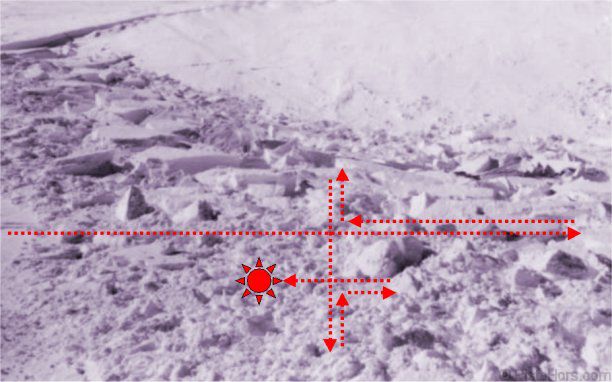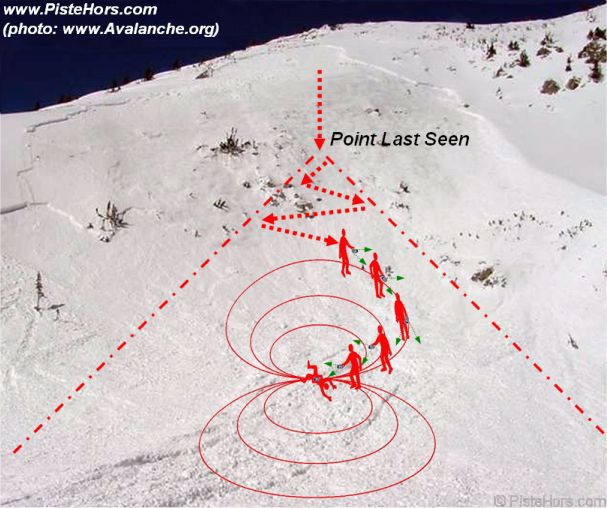
Avalanches > Search and Rescue > Searching for Avalanche Victims > Secondary Transceiver Search
The secondary search should find the approximate location of the victim. With analogue beacons two methods are used. The cross method, slower but easier for unskilled searchers and the faster directional or flux Line method. Digital beacons use the Directional method. An average sized avalanche of some 400 square meters would take a large team litterally hours to search with probes alone.

Secondary search of avalanche victim using the cross-technique
The Cross search is performed with the transceiver held vertically, reduce the volume to the minimum audible and traverse horizontally across the search area, further reducing the volume as necessary, until the maximum signal is obtained. Move upwards vertically from this point, if the volume decreases go down. Again find the maximum volume. Repeat until the volume control is on the minimum setting, the victim is somewhere underneath. To speed up the process the searcher can turn at 90 degrees the second the volume starts to decrease from the maximum.
Ski poles can be used to mark the search boundaries.

Figure 4: Directional or Flux Line Search
For a directional or flux line search, reduce the volume to the minimum audible (or observe the direction indicators on a digital device) and hold the transceiver horizontal. Rotate left until the signal disappears, make a note of the direction then rotate right and repeat. The intersection is the search axis. Move in this direction, if the signal disappears rotate 180 degrees and walk 10 meters in the new direction, the signal should get louder. Reduce the volume to a minimum and repeat the same process as before to find a new search axes. Repeat until you are at the near the lowest level on the volume control or within two meters on the digital readout. We have effectively followed the oval shaped flux line of the transmitter in a broad curve. It is important to note that the maximum signal does not give the direction of the victim it merely tells the searcher that his beacon is aligned with the flux lines transmitted by the victim's beacon.
<< Primary Transceiver Search | Searching for Avalanche Victims | Localization with Transceiver and Probe >>